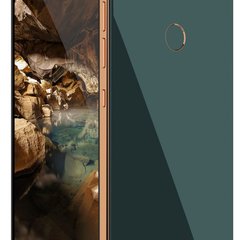When choosing a new smartphone you often check all the technical details and try to make a reasonable choice. After all, everyone wants to get the best deal for the money. So, while looking at these tech specs, you will see a whole bunch of different terms, marks, and acronyms. One of the most mystical marks stands with WiFi standards. What on Earth is the WiFi b/g/n/ac? Let’s find out! We will give our best to make the explanations as simple as possible to help you figure it out. WiFi - one might say that it is a short form of Wireless Fidelity, but it is not entirely right. WiFi is a trademark phrase that refers to IEEE 802.11.x standards. Usually, when we say WiFi we are pointing to the wireless network that uses radio waves to provide us with the internet connection. [caption id="attachment_8203" align="aligncenter" width="300"] WiFi standards[/caption]
IEEE - Institute of Electrical and Electronics Engineers. One of the largest professional organizations in the world. Their job is to educate people and to institutionalize technical innovations. They are active in fields of electronics, electrical engineering, telecommunications, computer science, computer engineering and information technology. IEEE has set standards in WIFi technology known as 802.11.x standards. 802.11.x standards - group of specifications for wireless local area network. They define connection over-the-air between a wireless client and the base station or between two different wireless clients. IEEE published first standards in 1997, and they have developed over time. Today we have more than ten 802.11.x standards that we are using more or less. Mobile devices are using only a few of them. 802.11 - old standard, not used anymore. It provided 1 or 2 Mbps transmission in the 2.4 GHz band. It is too slow for most applications. 802.11a - supports speed up to 54 Mbps on a band of 5GHz. It has high maintenance costs, and it is suitable for business users. It has a short range and can’t penetrate walls and other obstacles, so it is perfect for open space offices. 802.11b - released at the same time as 802.11a in 1999. It provides a bandwidth of 11Mbps at a frequency of 2.4Ghz. This wireless standard was compatible with traditional Ethernet. Because of the lower costs and lower maximal speed it could be used at home. The downside of this standard is that it can be interfered with home appliances (such as microwave or cordless phone that are using the same frequency) if they are close to one another. * 802.11.a and 802.11.b are not compatible and can’t be used on same devices. [caption id="attachment_8207" align="aligncenter" width="178"] WiFi is a common part of the smartphone equipmet[/caption]
802.11g - this standard combines the best from the previous two. IEEE ratified in 2003 and soon after it becomes very popular on the market - it reduces manufacturing price and offers higher data rates. It works in the 2.4GHz band (just like 802.11b) and has a speed of 54Mbps (as 802.11.a). It is compatible with 802.11b standard and supports the same devices. The issue with the interference of the frequency is still not resolved, so you may have some troubles if you are near wireless keyboard with using it. 802.11n - also known as “Wireless N”. It was published in 2009. It significantly improves all previous standards by implementing MIMO technology (multiple inputs multiple outputs). MIMO simply means that this standard is using multiple wireless signals and antennas. It offers speed up to 300Mbps on both frequencies 2.4Mhz and 5Mhz. It is also quite resistant to interference and provides backward compatibility with b and g devices. [caption id="attachment_8205" align="aligncenter" width="300"] Wireless N emitting device[/caption]
802.11ac- the latest standard released in December 2013. 802.11ac is a successor of 802.11n. It doubles performances of the predecessor in every possible way. It works on the 5GHz band and supports the speed up to 1300Mbps. Multi-user MIMO enables it to include wider channel range comparing to any other standard before (80Mhz channel). * A close cousin of this standard is 802.11.acWave2. It supports 160 Mhz channels. So, let's get back to the original question: " What on Earth is the WiFi b/g/n/ac?". Well, they are standards that are telling you on which transmitting device you can connect. Since most mobile phones support a few standards, you should not have any troubles finding the internet connection. If you wish to be up to date and have the latest and greatest, you should pick a phone that supports 802.11ac standard. Source:
Make use of,
Wikipedia,
Webopedia Image sources:
TechForAnyone.
Forbes,









